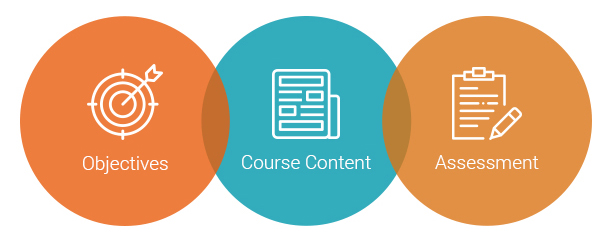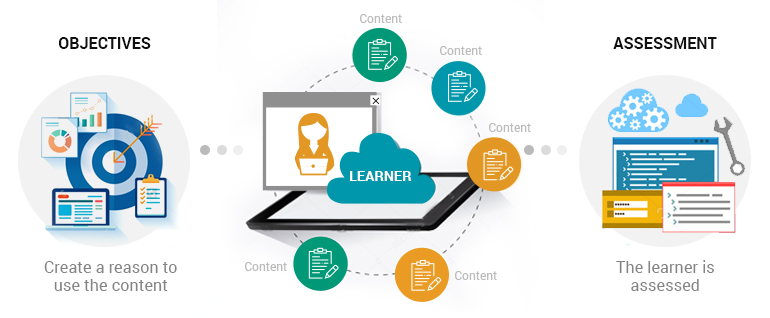Are you designing the right e-learning course?
We all know that e-learning doesn’t just happen, it requires proper planning. So let’s set up to the plate and get passionate about designing the right e-learning course.
In an e-learning course, content is everything, and developing it is multifaceted. So instead of bringing people to learning, we need to bring learning to people by masterfully designing the courses.
The prerequisites for plotting an e-learning are:
-
- How to build an engaging and meaningful course?
-
- How to make the learners interact with the course?
-
- What will be the navigational functionality of the course?
-
- How will the course serve the meaning of the content?
To accommodate all the prerequisites, and to mask the raw content with creative design, the two key objectives to be kept in mind are identifying the purpose of the course and understanding the course type. While identifying the course purpose, the main point is to make the client focus on real performance goals, and then guide them to the appropriate interference. Once the purpose is zeroed down, the second objective is to understand the type of e-learning course.
There are three types of e-learning courses:
1. Communicating information with no performance expectations: These type of elearning courses do not have any built-in expectations, they communicate new information. The courses that demonstrate new features of a software is an example.
2. Providing step-by-step instructions: These type of courses demonstrate procedures focused on doing something. A good example would be courses that give instructions to learners.
3. Sharing guidelines to help the learner solve problems: These type of courses demonstrate principles or guidelines where the developer needs to understand learner’s nuances while working with the application.
Once the most important areas are decided upon, think about what the learner has to do after taking the e-learning course. Then, decide whether to build an informational or performance based course.
Push vs Pull
Most e-learning courses are structured around the idea of pushing the information out to the learners. So a straight point approach is used by starting the course with objectives, course content and assessment.
Push Content – Straight Point

There is nothing incorrect about this approach, in fact it is the best approach for courses with no real performance requirements. The downside is that all the course’s information looks equally relevant.
Instead of pushing content, learners can be pulled to the content. In this approach, the reason for creating the content is more vital than designing the content.
Pull Content – Varied Experience

In this approach, learners have access to the same information but each learner will have a different learning experience. The learner gets to decide which pieces of content they want to learn and in what order.
Creating pull based e-learning courses is not too complicated, just crafting the content into a case study or scenario can engage the learner to get pulled. Essentially it is to create a need for the information, so that the learner gets motivated to learn and satisfy that need.
Once the idea of developing the course is set, make the idea happen by providing realistic situations, and urge the learners to use the information in the future. Also, remember to design an elearning course as a designing experience by ‘saying it’, ‘showing it’, ‘writing it’, ‘demoing it,’ and ‘linking it with an activity’. This will help in understanding the thought process of instructional design and teach tomorrow’s skills today, in this digital age.
<!–
div.content-img-101{display:block; text-align:center;}
img.wp-image-5452{display:none;}
img.wp-image-5471{display:inline-block; text-align:center;}
@media only screen and (max-width:600px){
img.wp-image-5452{display:inline-block; text-align:center;}
img.wp-image-5443{display:none;}
}
–>




